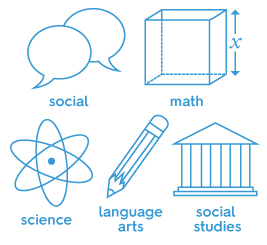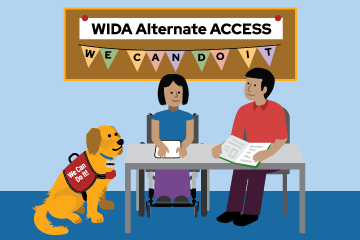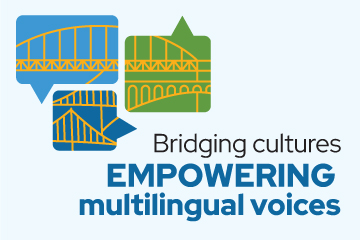Resources/Recursos
Featured Resources



All resources/Todos los recursos
Design Principles for Engaging Multilingual Learners in Three-Dimensional Science
WIDA and the National Science Teaching Association formed Making Science Multilingual to support equitable and inclusive forms of science instruction through which all students, but especially multilingual learners, can learn science and language simultaneously. To guide this work, the Making Science Multilingual team devised eight design principles to define the integration of contemporary three-dimensional science and language-in-use pedagogies. These principles will guide educator resource development at both organizations and facilitate critical examination of how well educator resources support inclusion of multilingual learners in rigorous science learning.
Resource DetailsDistrict Readiness to Implement Standards-Based Reform for English Language Learners a Decade After No Child Left Behind Act
This 16-state survey of school districts with fewer than 500 English language learners revealed that few district-level English language learner staff had formal preparation in educating English language learner or using English language proficiency standards. A wide school-level disparity existed between English as a second language or bilingual teachers and general education teachers in terms of their engagement with proficiency standards and assessment data.
Resource DetailsEnglish Learner Identification of Kindergarten Learners
This study examines decision makers, criteria and procedures of kindergarten English learner identification within a U.S. state, in view of WIDA Screener for Kindergarten.
Resource Details View Download NowExamination of Identification and Placement Decisions Made for K–12 English Learners
This study examines how 476 K–12 educators in 35 U.S. states identify and place English learners in language instruction educational programs. Findings reveal information about these educators, the instruments and information sources they use for decision making, and their perceived appropriateness of the decisions. Results provide practical implications for improving the English learner identification and placement decision at the district and school levels.
Resource DetailsExamining Preschool-aged Dual Language Learners’ Language Use: From a Functional Approach
This study examines oral language development of 14 dual language learners ages 2.5 to 5.5 years in preschools in the Midwestern United States. They engaged in five key language uses: argue, explain, heuristic, recount, and request. Preschoolers 2.5 to 3.5 years only made simple requests or argued to meet their needs; the older cohort demonstrated a wider range of key language uses.
Resource DetailsImplementation of the English Language Proficiency Standards Across the WIDA Consortium
This paper finds that many educators see the WIDA English language proficiency standards as a tool that can guide them in differentiating instruction and supporting language development among English language learners.
Resource DetailsIncluding Recently Arrived English Learners in State Accountability Systems: An Empirical Illustration of Models
Based on a U.S. Department of Education guide, these model analyses illustrate procedures a state could use to compare and contrast school-level overall and English learner accountability determinations for proficiency in reading/language arts. These examples are provided only to illustrate how a state could undertake them as part of its efforts to develop and explore a theory of action for assessment of recently arrived English learners.
Resource DetailsInterpretation and Use of K–12 Language Proficiency Assessment Score Reports: Perspectives of Educators and Parents
This paper examine how 18 K–12 educators from 13 states and 12 parents from two states interpret and use score reports from the WIDA ACCESS for ELLs. Educators frequently referred to the proficiency level index of the four language domains of listening, speaking, reading, and writing, and the composite domains to interpret student performance, to make school-level decisions about programming and lesson planning, and to inform district-level budgeting and professional development. Parents found the score report to be helpful, but rarely took additional actions to use its information.
Resource DetailsLess Than Four Domains: Creating an Overall Composite Score as an Indicator of English Language Proficiency for English Learners with 504 or Individualized Education Plans
The illustrated models and procedures can be applied to calculate overall composite scores to identify an indicator of English language proficiency, based on composite scores for English learners with 504 or individualized education plans who are missing one or more domain scores on the Assessing Comprehension and Communication in English State-to-State for English Language Learners assessment for state monitoring, achievement and accountability determinations.
Resource DetailsTeaching for Equity: The CLEAR Paradigm
This working paper provides insights into how all teachers can provide linguistically and culturally responsive and equitable education for all students by orchestrating instruction to meet their varying socioemotional, cultural, linguistic and academic needs. Grounded in social justice, the Cultural, Linguistic, Equity, and Responsiveness (CLEAR) paradigm presented in this paper describes a guiding framework for educators who wish to integrate sociocultural and sociolinguistic responsiveness and critical pedagogical practices to achieve quality, equitable education for their students.
Resource DetailsThe WIDA Framework for Equitable Instruction of Multilingual Children and Youth in Content-Area Classrooms
The Framework for Equitable Instruction (FEI) is an instruction-focused resource designed to promote the equitable engagement in disciplinary learning and language development of multilingual learners. The FEI complements the WIDA ELD Standards Framework, 2020 Edition. This working paper can inform teachers’ practice, support teacher collaboration within and across disciplines, and serve as a foundation for the design of professional learning opportunities and resources.
Resource DetailsTool to Evaluate Language Complexity of Test Items
This paper focuses on the creation of an instructional hyper textbook that serves as a personal environment for learning a less-commonly-taught language, Turkish in this case. It shows how digital personal environments can advance self-regulated language learning in tandem with more formal learning strategies.
Resource DetailsUsing WIDA MODEL in International Contexts: Findings from the 2018 Educator Survey
This working paper presents findings from a survey conducted in 2018 to understand how schools in the WIDA International School Consortium use MODEL.
Published 2019
Resource Details View Download NowUsing WIDA MODEL in International Contexts: Findings from the 2019 Educator Interviews
This working paper presents findings from a series of educator interviews conducted to understand how schools in the WIDA International School Consortium use MODEL.
Resource Details View Download Now



